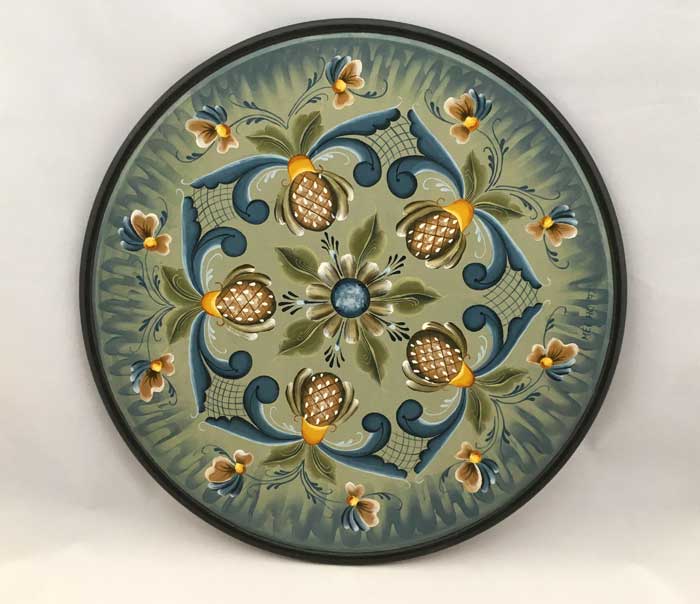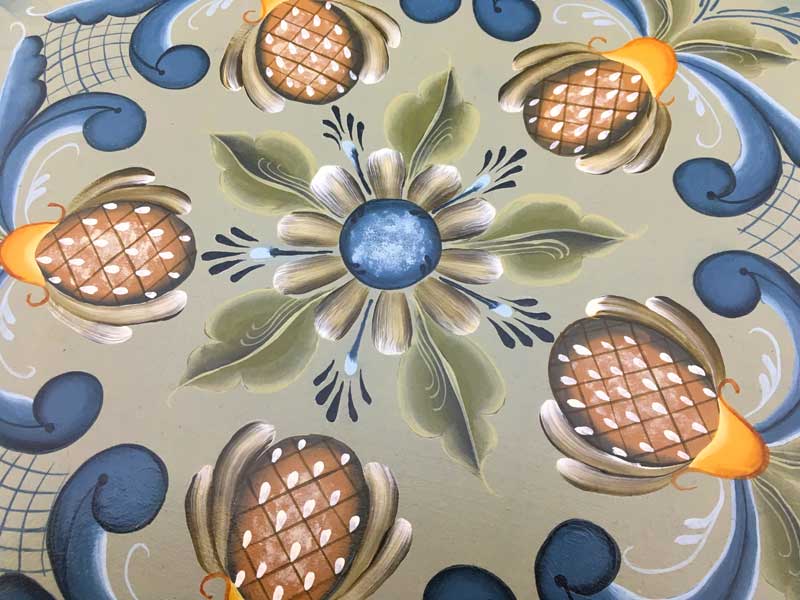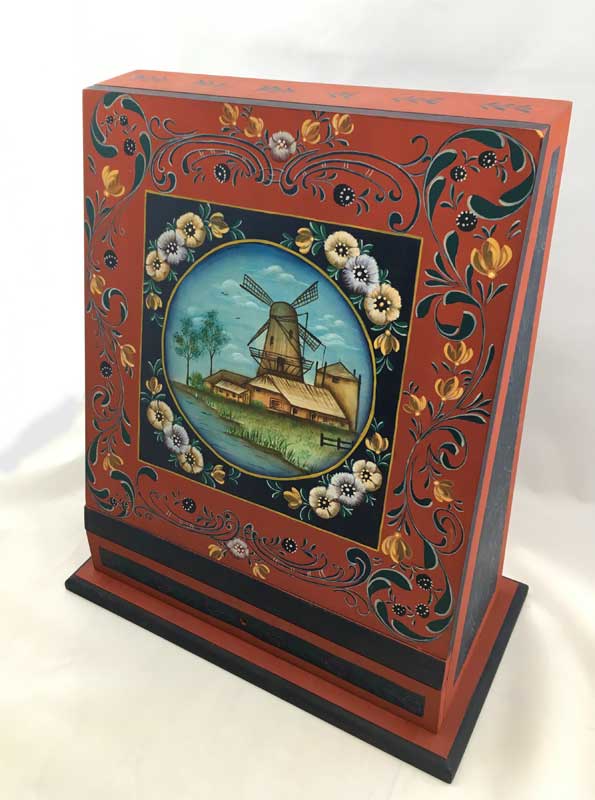Hindeloopen Painting Singapore
The Origins of Hindeloopen Style
Originating in the province of Friesland in The Netherlands, the Hindeloopen style of painting was born out of the necessity of sailors on hard times. The art derives its name from the small fishing village of Hindeloopen. Sailors who could not find work on the seas, were forced to drum up other sources of income. Due to the large volume of trading through the village of Hindeloopen, art became a valuable commodity, and thus the style of Hindeloopen painting was born.
Central Theme around Flowers
The central theme of the Hindeloopen style revolves around flowers. Examples of flowers to use for inspiration include daisies, poppies, tulips, roses, and chrysanthemums. Small petals make up the majority of the painting while surrounded by a wealth of acanthus scrolls. The flowers combine to form some semblance of a pattern, giving the entire painting a very strong feeling of balance. The paintings often features a bird in the center that is deemed to be lucky. The bird is usually positioned to be looking over its back shoulder, in order to keep any devilish spirits at bay. The relationship between the bird and the flowers is crucial to achieving the artistic harmony that so many Hindeloopen paintings represent.
Painting on Wood
Traditionally, the Hindeloopen style referred to carvings on wood. During the end of the 17th century, the style was born by sailors carving flowers into beautiful pieces of oak furniture. The Hindeloopen style could be seen adorning closets, doors, and all manners of wood furniture throughout the house. These carvings were then given color, typically of the green, blue, and red variety.
Over time, the artist replicated the carvings through painting. Each layer of paint applied is intended to give the painting depth that could normally only be accomplished through carving of wood.
Stroke Work
Light strokes are first used to create the detail of the flowers, leaves, and scrolls that surround the wood. Rounded brushes are often used, to help to lighten up the colors giving a sense of soft movement to the flowers.
The second layer include typically darker colors in order to create shadows to the flowers. The colors create the depth that replicates the carvings on wood. Using dark blues and greens are recommended for this portion of the process to stay in line with traditional techniques.
The third layer focuses on very bright and heavy white. White paint gives your flowers the ultimate form of depth and movement. Using a chiseled or flat small brush you can edge each individual petals to allow your flower to pop right off the wood. This step is necessary in order to give your flowers the traditional Hindeloopen look.
Finally, since this style of art requires a wood canvas to be authentic, the wooden canvas used should have nice thick sides. The sides, or edges of the wood are typically given a marbleized finish.
Hindeloopen Classes
At Heartroom Gallery, we have classes where you can learn how to paint beautiful pieces in the Hindeloopen style of Decorative Painting. Classes start with the basic stroke work graduating to simple pieces by painting on wooden plates. Intermediate pieces include the beautiful Hindeloopen patterns beautiful trays. While advanced students can paint on furniture.
Decorative Tray - Hindeloopen Style


Hindeloopen Painted Letterbox


